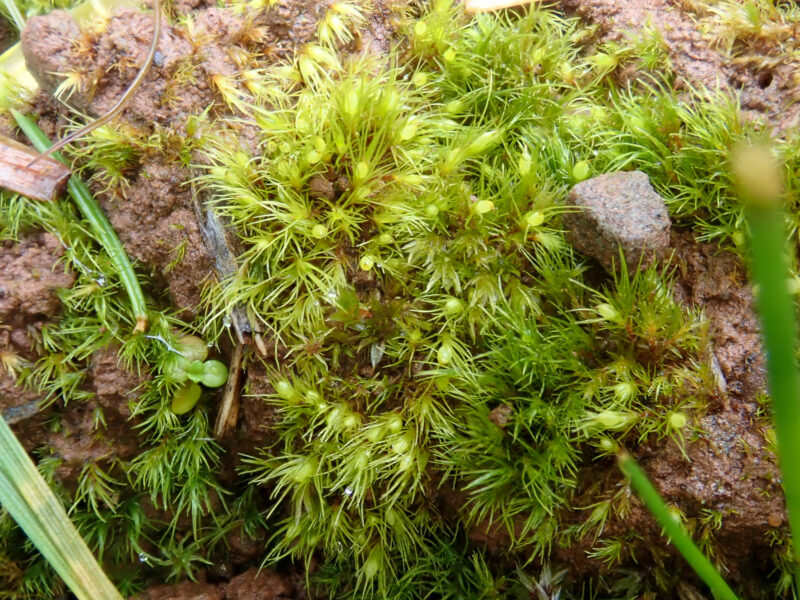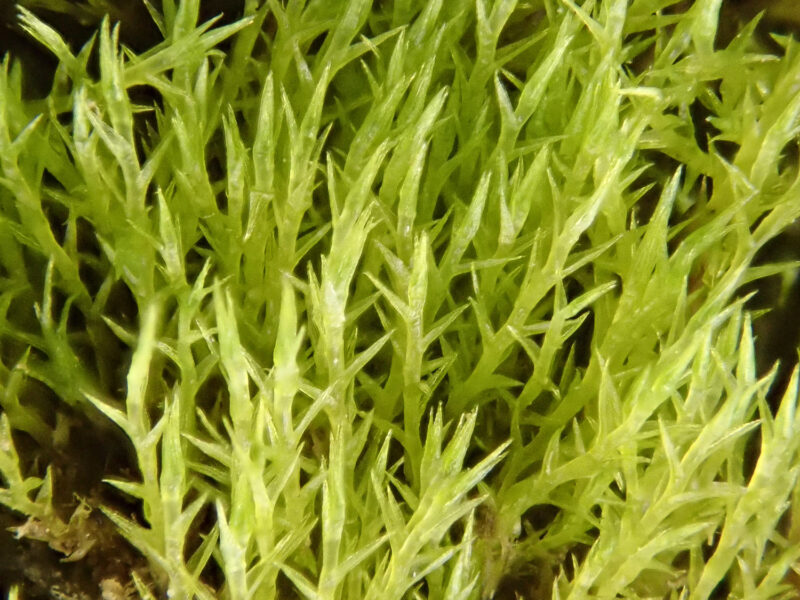Identification notes
Pleuridium subulatum is a small, ephemeral moss with a short life-cycle. Its capsules usually mature in spring or summer, so in the winter you may come across immature plants without them. These are confusing as they can be mistaken for other acrocarps with long, slightly curved leaves, such as Dicranella heteromalla, Ditrichum heteromallum or even small Flexitrichum gracile. Good indicators of Pleuridium are perichaetial leaves at the top of the shoots much longer than the uppermost stem leaves, surrounding a small structure which contains archegonia (once fertilised, one of these will develop into the sporophyte).
P. acuminatum is a more common plant and most likely to be found on acidic soils. P. subulatum is always worth checking for in less acidic situations. An important difference from P. acuminatum is the presence of persistent bud-like male branches in some leaf axils of the shoot. They are very small and often hard to see with a hand-lens, so candidate material should be collected, cleaned up if necessary and examined with a dissecting microscope. Pseudephemerum nitidum grows in similar places, but its perichaetial leaves are about the same length as its upper stem leaves.
Read the Field Guide account








